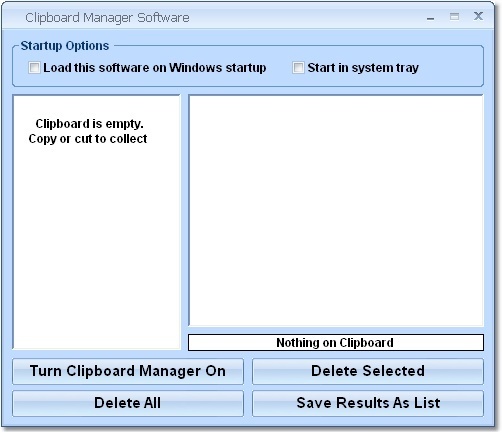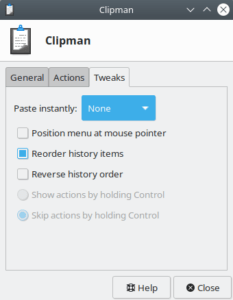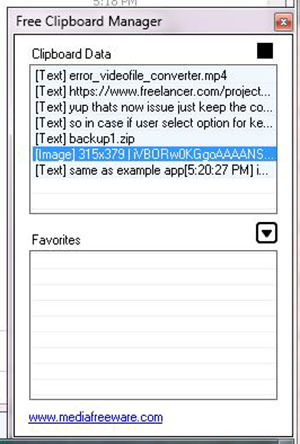

Rather than the old "cut buffers" system where arbitrary applications could modify data stored in the cut buffers, only one application may control or "own" a selection at one time. Despite the naming, all three selections are basically "clipboards". While ICCCM also defines a SECONDARY selection, it does not have a consensually agreed upon purpose. The majority of programs for Xorg, including Qt and GTK applications, follow this behavior. Unlike PRIMARY, it can also handle multiple data formats. Hence, it behaves like the single-clipboard system on Windows. CLIPBOARD Used for explicit copy/paste commands involving keyboard shortcuts or menu items. In some cases, pasting is also possible with a keyboard shortcut. Cut buffers are long deprecated, and although some applications (such as xterm) may have legacy support for them, it is both not likely and not recommended that they be used.į describes the two main selections as follows: PRIMARY Used for the currently selected text, even if it is not explicitly copied, and for middle-mouse-click pasting. However, they were inefficient and implementation of them varied, so selections were introduced. These were limited buffers that stored arbitrary text and were used by most applications.

The clipboard is a facility used for short-term data storage and/or data transfer between documents or applications, via copy and paste operations. Those in the market for an alternative to Windows’ built-in Clipboard History shortcut that follows their cursor around and boasts a dedicated system tray icon can look no further than ClipMan’s straightforward interface optimized for both mouse and keyboard-focused workflows.Reason: Describe clipboards for Wayland and Xwayland. Finally, making its interface draggable would also help those who rely on muscle memory to access the clipboard. In terms of improvements, the app does seem to take up a rather large percentage of the screen real estate while active, which is why an option to resize the window would make a great addition. For security purposes, you can also encrypt its clipboard database with a custom password. Additionally, in order to avoid dragging the mouse to a predefined are in one of the screen’s corners, the app automatically brings the clipboard list right next to the cursor for users to easily select the right item.Īlternatively, once the program’s window is in the foreground, one can select the desired element using the arrow and Enter keys to immediately paste it into the text input area of their choice, making for a faster process. Users with either mouse-based or keyboard-focused workflows will be able to summon its main window by left-clicking the icon or by executing a quick shortcut through the Alt and tilde keys.


A handy feature is the ability to preview the time at which a certain item was added by hovering the cursor over it, letting users retrace the steps they made in their research process. In terms of layout, the application generates a semi-transparent dark-themed interface for a better nighttime usage experience, highlighting the selected clipboard element in a vivid red hue for accessibility purposes.
Clipman clipboard manager portable#
Straightforward setupĭouble-clicking the portable program’s executable instantly launches the background process that keeps records of the items copied to the clipboard, while users can interact at any point with its minimalist system tray icon, meant to avoid cluttering up the main taskbar area. When it comes to researching and referencing various materials, having a dedicated menu with the most used elements ready for pasting in the right spots can save you a lot of time and energy, which is where a clipboard manager such as ClipMan comes into play, with a layout focused on ease-of-use and flexibility with input methods.


 0 kommentar(er)
0 kommentar(er)
